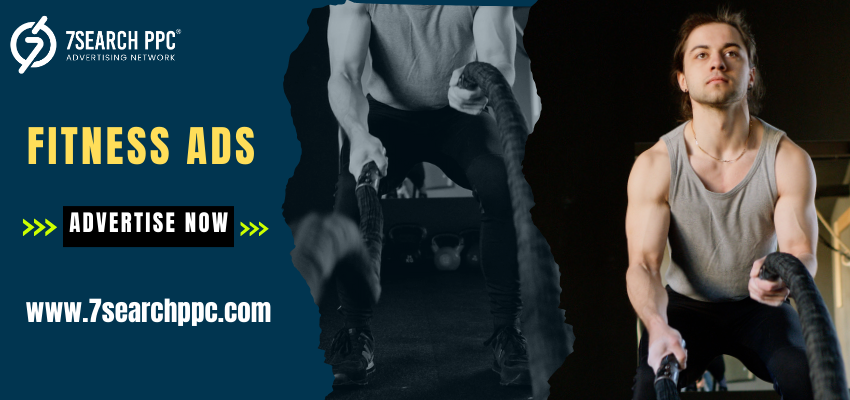Fitness ads play a crucial role in promoting health and wellness by reaching individuals who seek to improve their physical fitness. However, without a well-defined target audience, even the best fitness ads may fail to achieve their intended impact. Identifying and understanding the right audience allows marketers to create compelling messages that resonate with potential customers, leading to higher engagement and conversion rates.
In this article, we will explore why the target audience is important for fitness ads, how it influences ad performance, and how advertisers can craft effective campaigns by focusing on audience demographics, preferences, and behaviors.

The Importance of Target Audience in Fitness Ads
A well-defined target audience is the foundation of successful fitness advertisements. Whether promoting gym memberships, workout programs, or fitness equipment, understanding the audience ensures that the message is relevant and compelling. Here are some key reasons why audience targeting is essential:
Improved Engagement and Conversion Rates
When fitness ads are tailored to a specific audience, they are more likely to capture attention and drive engagement. For example, an ad for high-intensity interval training (HIIT) will appeal more to young fitness enthusiasts than to seniors looking for low-impact exercises.
Efficient Use of Marketing Budget
Targeting the right audience helps marketers optimize their advertising spend. Instead of casting a wide net, fitness advertisements can focus on individuals who are most likely to be interested in the product or service. This minimizes wasteful spending and maximizes return on investment (ROI).
Better Personalization and Customer Experience
Consumers respond positively to personalized marketing messages. By segmenting the audience based on age, gender, fitness goals, and lifestyle preferences, advertisers can craft messages that resonate with different groups, making the ads more effective.
Stronger Brand Loyalty and Community Building
Effective fitness advertising not only drives immediate sales but also fosters long-term relationships with customers. By consistently delivering relevant content to a well-defined audience, brands can build a loyal customer base and create a community around their fitness products or services.
How to Identify the Right Target Audience for Fitness Ads
To create the best fitness ads, advertisers must conduct thorough research and analysis to identify their ideal audience. Here are some essential steps:
Analyze Demographics and Psychographics
Understanding demographic factors such as age, gender, location, and income level helps in segmenting the audience. Additionally, psychographic factors like fitness goals, workout preferences, and lifestyle choices provide deeper insights into consumer behavior.
Use Data Analytics and Market Research
Leveraging analytics tools and market research can provide valuable data on consumer preferences and trends. Surveys, social media insights, and website analytics help advertisers determine which audience segments are most engaged with fitness advertisements.
Consider Behavioral Targeting
Behavioral targeting involves analyzing users’ online activities, such as their search history, social media interactions, and purchasing behavior. This data helps marketers design fitness ads that align with the audience’s interests and habits.
Segmenting the Audience Based on Fitness Levels
Fitness needs vary across different individuals. Some people are beginners looking for easy workout routines, while others are experienced athletes seeking advanced training programs. Segmenting the audience based on fitness levels ensures that advertisements are relevant and engaging.
Best Fitness Ads Strategies for Different Target Audiences
Once the target audience is identified, advertisers can tailor their fitness ads to different groups using specific strategies.
Ads for Beginners and General Fitness Enthusiasts
Use simple and encouraging language to promote inclusivity.
Feature success stories of individuals who started their fitness journey.
Highlight beginner-friendly programs, such as home workouts or basic gym memberships.
Ads for Athletes and Advanced Fitness Users
Focus on performance enhancement and specialized training programs.
Showcase high-intensity workouts, recovery techniques, and advanced fitness equipment.
Use testimonials from professional athletes or fitness influencers.
Ads for Seniors and Low-Impact Fitness Seekers
Emphasize the benefits of gentle exercises like yoga, Pilates, or water aerobics.
Use positive health and fitness advertisement messaging that focuses on longevity and well-being.
Highlight safety and accessibility features in fitness programs.
Ads for Weight Loss and Body Transformation
Use motivational before-and-after visuals.
Include testimonials and real-life transformation stories.
Promote diet plans and workout routines specifically designed for weight loss.
Examples of the Best Fitness Ads
Here are some successful fitness advertisements that effectively targeted their audiences:
Nike’s “You Can’t Stop Us” Campaign
Nike’s fitness ads focus on inclusivity and motivation, resonating with athletes and fitness enthusiasts worldwide. Their campaigns use powerful visuals and inspirational storytelling to engage their audience.
Peloton’s Home Fitness Ads
Peloton effectively targets home workout enthusiasts by showcasing its high-tech fitness equipment and interactive training programs. Their ads emphasize convenience and community support.
Planet Fitness’ “Judgment-Free Zone” Ads
Planet Fitness appeals to beginners and casual gym-goers by promoting a non-intimidating fitness environment. Their fitness advertisements focus on affordability and accessibility.
Conclusion
Targeting the right audience is the key to crafting impactful fitness ads. By understanding demographics, behaviors, and fitness levels, advertisers can create compelling messages that drive engagement and sales. Whether promoting gym memberships, workout programs, or fitness products, focusing on the right audience ensures that advertisements resonate with potential customers, leading to better marketing success.
FAQs
Why do fitness ads need a target audience?
Ans. Fitness ads need a target audience to ensure the message is relevant, engaging, and effective. A well-defined audience increases conversion rates and optimizes marketing budgets.
How do fitness brands identify their target audience?
Ans. Fitness brands use demographic analysis, market research, data analytics, and behavioral targeting to identify their ideal audience.
What are some examples of successful fitness advertisements?
Ans. Nike’s “You Can’t Stop Us,” Peloton’s home fitness campaigns and Planet Fitness’ “Judgment-Free Zone” ads are great examples of successful fitness advertisements.
How can fitness ads improve engagement?
Ans. Fitness ads can improve engagement by personalizing content, using motivational storytelling, and targeting specific fitness levels and goals.
What platforms are best for fitness advertising?
Ans. Social media (Instagram, Facebook, TikTok), YouTube, Google Ads, and fitness-related websites are excellent platforms for fitness advertisements.
